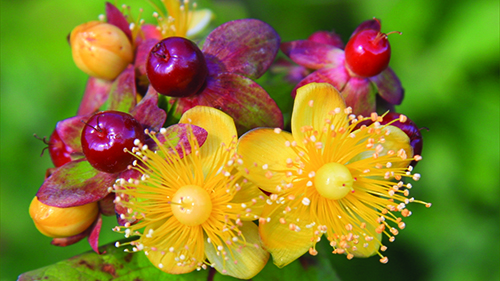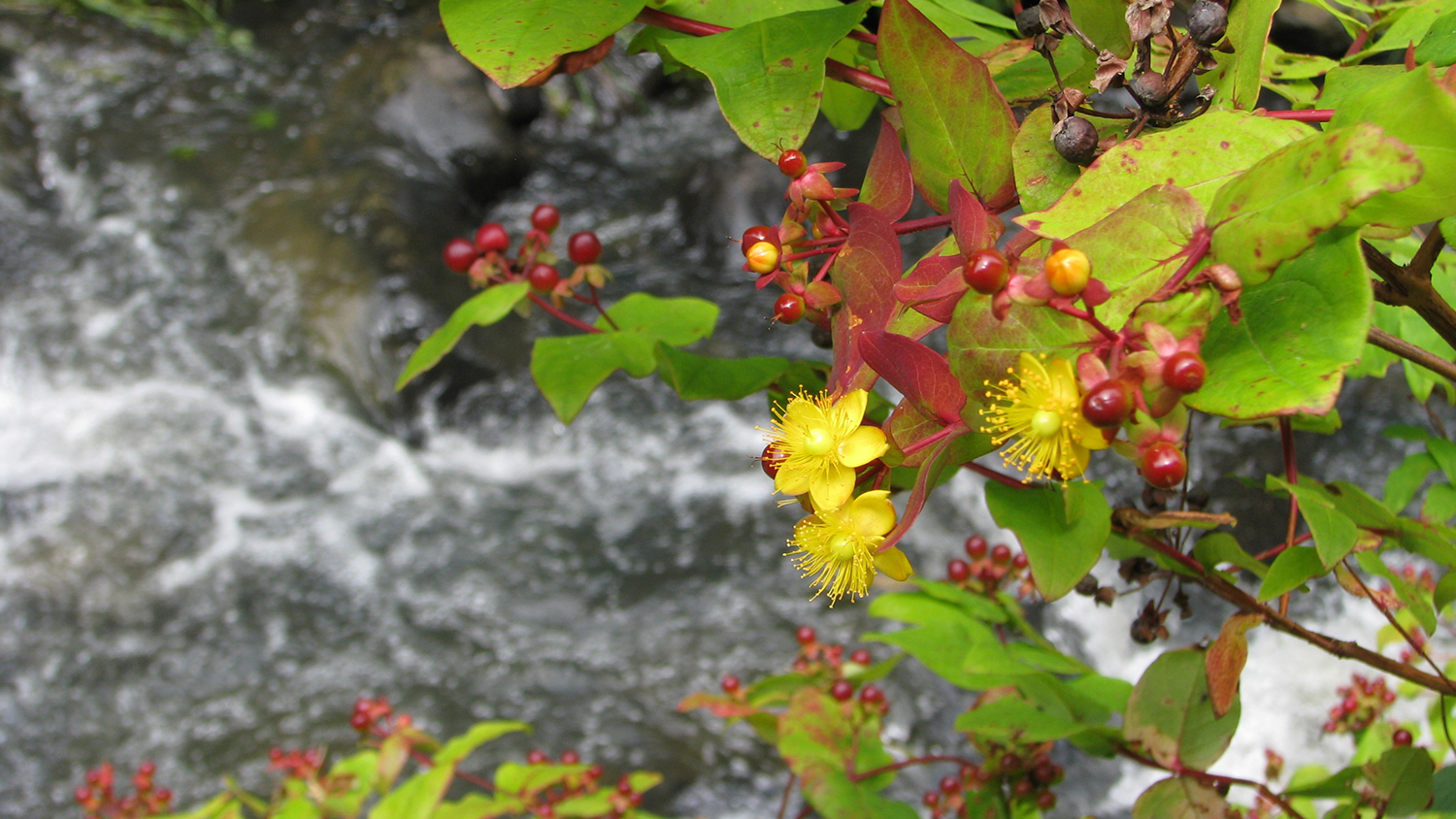| Management programme |
| Sustained control |
| Impacts |
| Economic, biodiversity |
| Objectives |
| Keep tutsan from affecting land free of or being cleared of it. |
Tutsan invades regenerating sites, forming dense stands which stop native plant seedlings growing. It prefers wetter, cooler areas and tolerates light shade. Tutsan also readily invades disturbed forest and shrubland, tussockland, bare land and rocklands, roadsides, coastal areas, steep banks, lightly-farmed land and riparian margins including rocky and open streams.

What does it look like?
Flowers
- Pale yellow flowers with 5 petals, appearing in bunches at the end of each branch.
- Flowers from November to February.
Fruit/seed
- Clusters of round fleshy fruit, each up to 10mm across.
- Red-coloured fruit is a berry, that turns to black when ripe.
Leaves
- Leaves are oval, generally 2cm-6cm long.
- Pale green on top, bluish-green underneath and turning red-yellow in Autumn.
- No leaf stalk.
- Usually opposite each other on the stem.
- Leaves smell of curry when crushed.
Stem
- Four-angled semi-woody stems.
Why is it a pest?
Tutsan has become a serious agricultural and environmental weed in the neighbouring Taranaki region and parts of the Manawatu region and is present in some parts of the Waikato. It is a threat to productive land, favouring marginal land and higher rainfall areas. Once established, patches of it can dominate farmland, especially in low fertility pasture. Although non-toxic, stock won’t eat it so it can quickly spread over large areas.
Tutsan can form a dense cover of branches and rotting leaves that smothers existing low growing plant communities and seriously inhibits regeneration (a semi-matting effect). It can infest forest areas under light shade, and heavily impact native plant communities in rocklands and on steep banks. It also invades regenerating sites, disturbed land, tussock land, riparian areas and roadsides.
Tutsan produces large amounts of seed that can be spread via birds, farm machinery, water and stock movement. In the Waikato region it also appears to be spread via roadside mowing.
Control methods
Physical control
Small infestations can be removed by hand. Dig out small patches of tutsan and take care to ensure that all rhizomes (root-like underground stems) are removed. Do follow up control every few months to remove any remaining rhizomes and prevent reinfestation.
Bury or compost the debris.
Herbicide control
Herbicides are most effective on tutsan during spring and early summer while the plants are still fresh and haven’t formed a wax coating. Shaded areas can be sprayed later if the plant is still fresh and hasn’t formed a wax coating to the same extent. Use herbicide at gorse label rates.
Safety when using herbicides
- Follow the instructions on the manufacturer’s label.
- Always wear protective clothing.
- Always minimise the risk to your other plants.
- Contact the supplier for further advice.
Summary of herbicides and application methods for control
| Herbicide | Application |
| Metsulfuron plus penetrant | Spot spray spring or early summer. |
| Triclopyr plus penetrant | Spot spray spring or early summer. |
| Picloram/triclopyr mix plus penetrant | Spot spray spring or early summer. |
| Picloram granules | 55g/m2 of ground covered by the dripline of the shrub. |
| Herbicide rules will apply. You may need to notify neighbours if spraying. The Waikato Regional Plan explains the agrichemical (herbicides) use rule in section 6.2. | |
| If applying herbicide over water, a resource consent may be required. Please check with Waikato Regional Council before you begin. | |
Management
After initial control, it’s important to:
- clean out the site again at least annually to control regrowth
- in pastures, apply fertiliser then over-sow with a clover/grass mix
- lift the fertility of the site, which may help prevent seedling growth.
More information
Advice
- For advice and additional information on tutsan control methods, call our pest plant staff on freephone 0800 800 401.
- Chemical company representatives, farm supply stores, garden centres or the Weedbusters website can also be good sources for advice.
Publications
The following publications are available for download or from Waikato Regional Council. Contact us to request a copy (freephone 0800 800 401).








To ask for help or report a problem, contact us
Tell us how we can improve the information on this page. (optional)